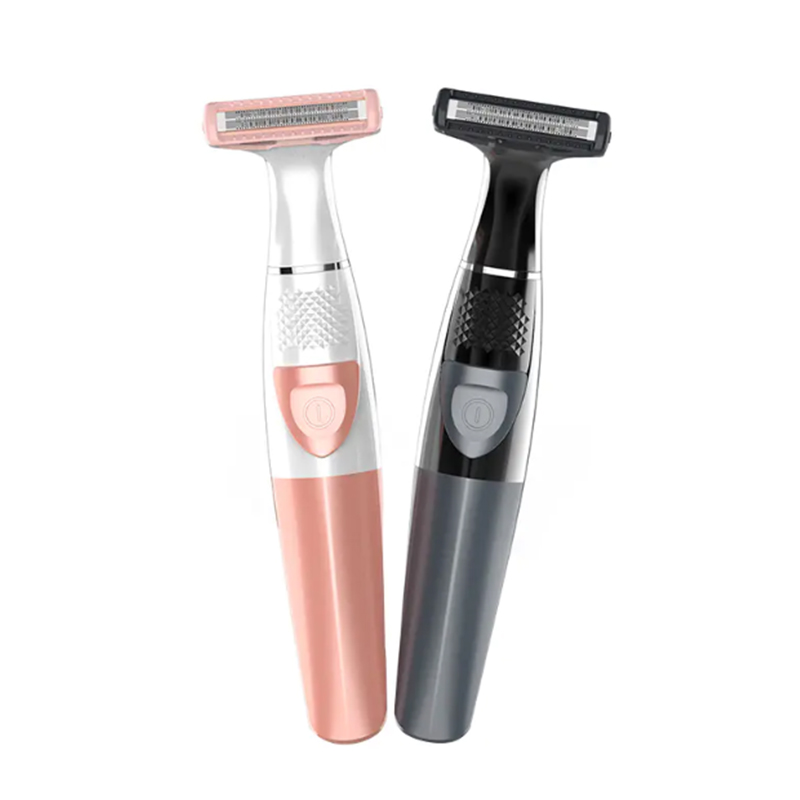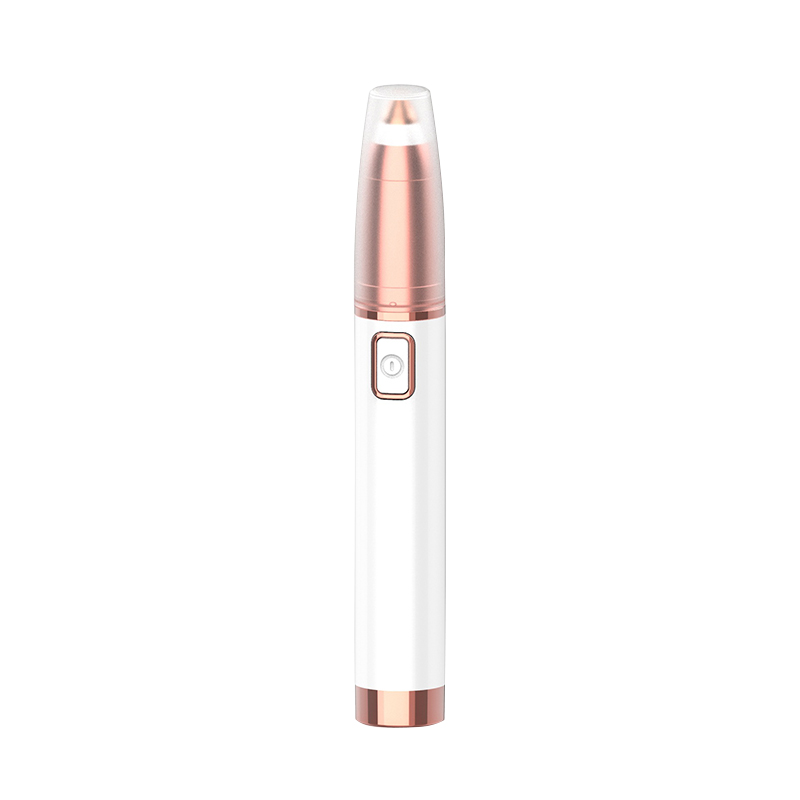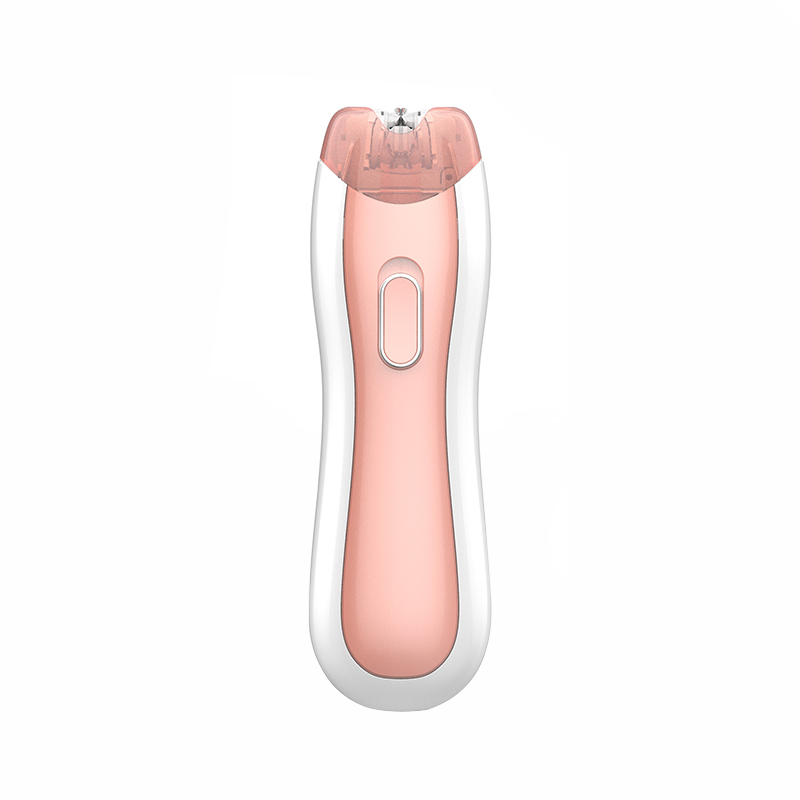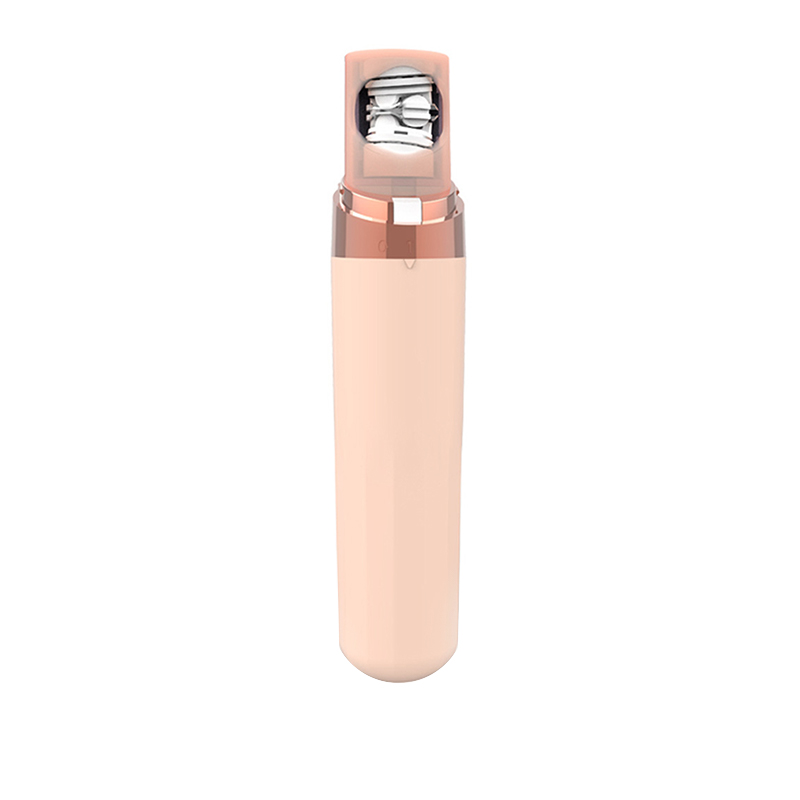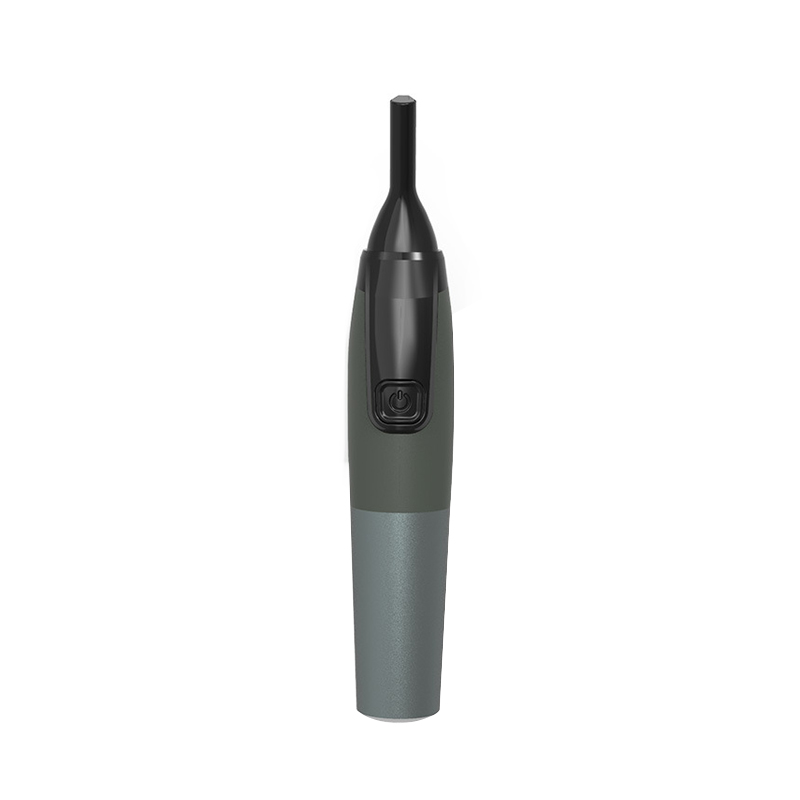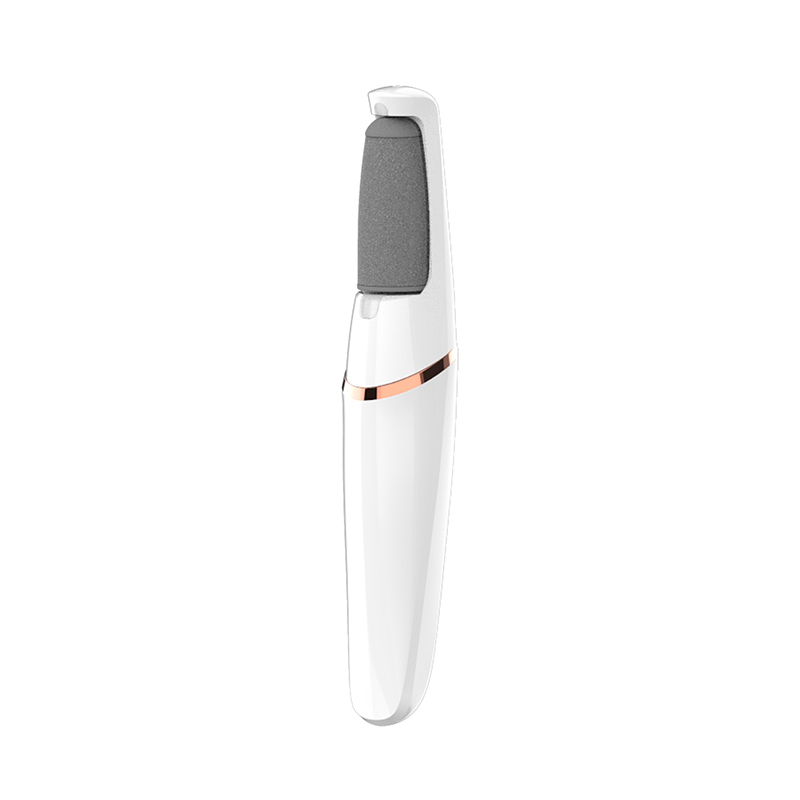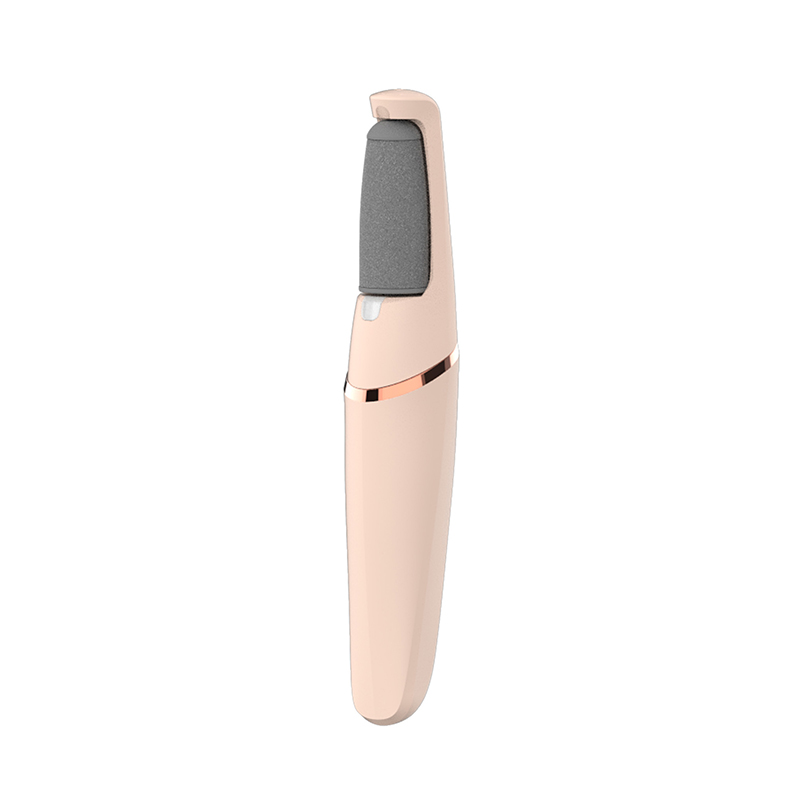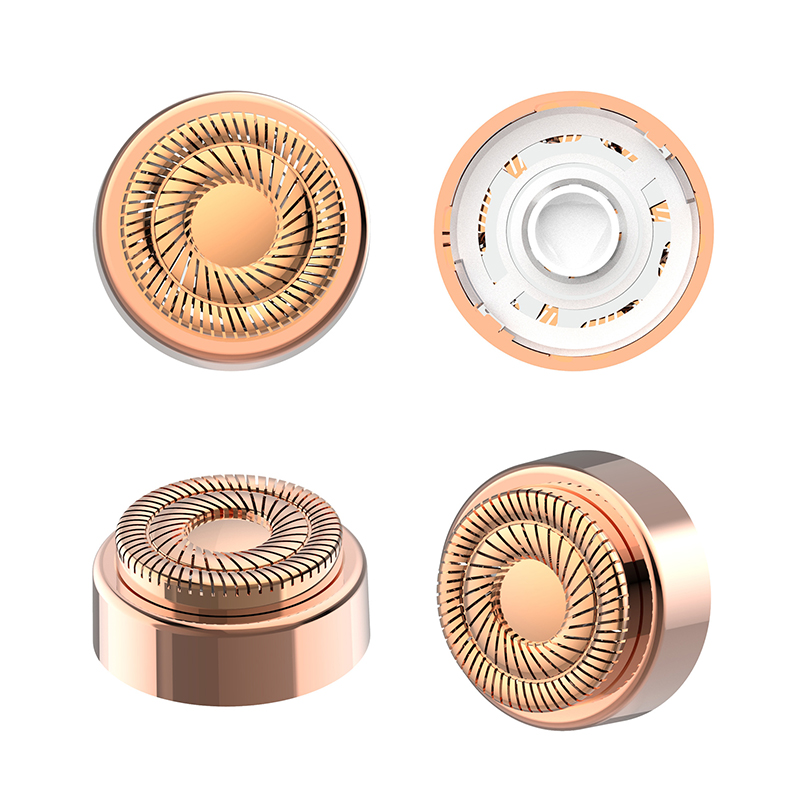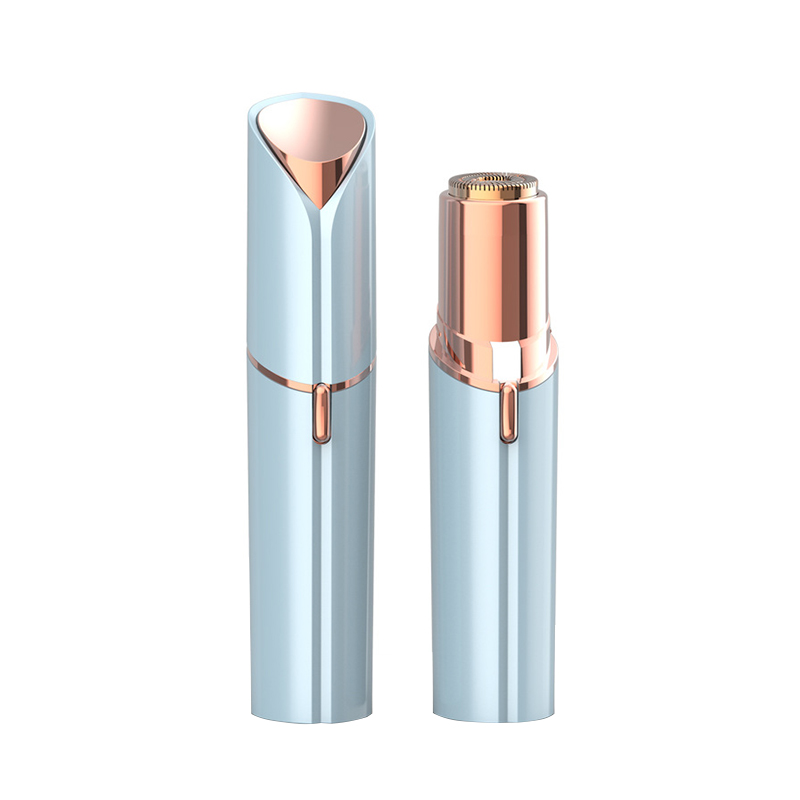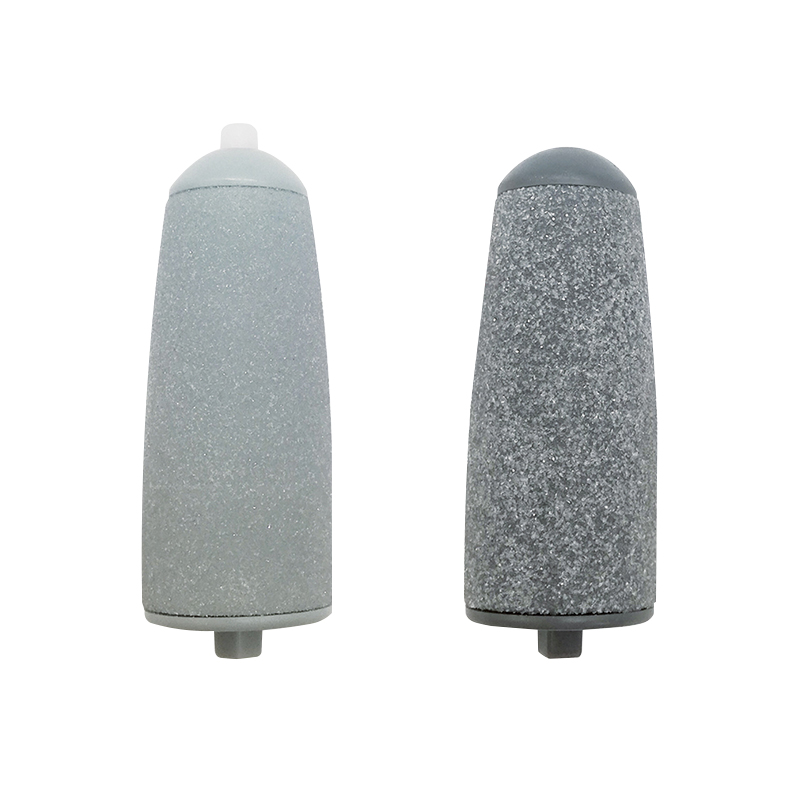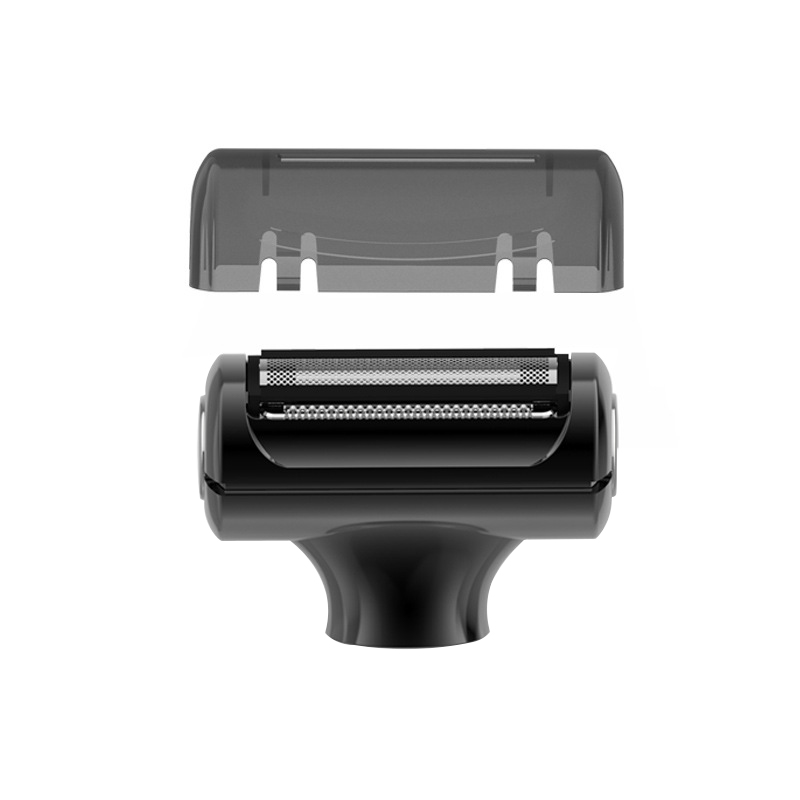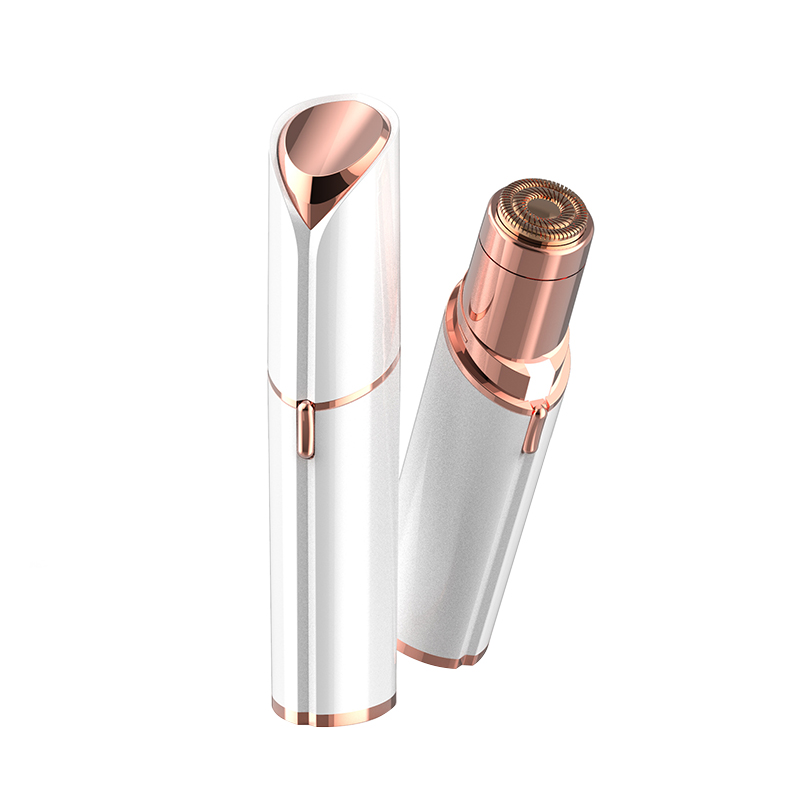Electric Facial Hair Removers represent a significant advancement in personal grooming, offering a convenient, precise, and often less painful alternative to traditional methods like tweezing, threading, waxing, shaving, or depilatory creams. These compact, battery-powered devices have evolved from niche gadgets to mainstream staples in beauty routines worldwide, catering to the diverse needs of individuals seeking smooth, hair-free skin on the delicate facial area.
1. Conceptual Foundation: Defining the Electric Facial Hair Remover
At its core, an Electric Facial Hair Remover is a handheld, portable electronic device specifically designed to remove unwanted vellus (peach fuzz) and terminal hair from the face. Unlike razors that cut hair at the skin's surface or depilatory creams that dissolve it chemically, most electric removers work mechanically. Their primary mechanisms involve:
- Grabbing and Extracting: Using precisely aligned tweezers or micro-openings rotating at high speed to grasp individual hairs and pull them out directly from the follicle.
- Cutting: Employing ultra-thin, oscillating blades that trim hair extremely close to the skin's surface without pulling (more common in devices targeting coarser hair or offering precision trimming features alongside epilation).
- Hybrid Technologies: Some advanced devices incorporate Intense Pulsed Light (IPL) technology alongside mechanical removal for longer-term reduction effects.
The defining characteristic is their reliance on an electric motor (powered by batteries or rechargeable cells) to drive the hair removal mechanism, enabling efficient, rapid treatment focused on smaller, more sensitive areas like the upper lip, chin, cheeks, jawline, eyebrows, and sideburns.
2. A Journey Through Time: Evolution of Electric Facial Hair Removal
The quest for efficient hair removal is ancient, but the electric solution has a relatively modern history:
- Early 20th Century: The first electric razors emerged, bulky and primarily for men's beards. Concepts for smaller devices existed but were impractical.
- Mid-20th Century: Miniaturization of motors and batteries paved the way for the first dedicated electric facial hair devices. Early models were often abrasive, inefficient, and lacked finesse.
- 1970s-1980s: Significant improvements emerged. Spring-based coil systems (popularized by brands like Epilady for legs) inspired smaller facial versions. Rotary systems gained traction. Devices became more accessible but comfort remained a challenge.
- 1990s-2000s: Technology leapfrogged. Micro-tweezer technology became dominant, offering greater precision and reduced pain compared to coils. Improved motor efficiency, better ergonomics, waterproofing, and the advent of rechargeable batteries greatly enhanced user experience.
- 2010s-Present: The era of refinement and specialization. Features exploded: hypoallergenic materials, LED lights for visibility, multiple speed settings, interchangeable heads for different areas/hair types, integrated cleaning systems, cordless flexibility, travel locks, and smart connectivity (app integration for usage tracking). IPL/Facial Hair Removal hybrids entered the market. Design became sleeker, quieter, and more user-centric. Brands proliferated, offering options at various price points and targeting specific demographics.
3. Delving into the Mechanics: How Do They Actually Work?
Understanding the core technologies is crucial to appreciating their differences:
-
Micro-Tweezer Technology (Epilation):
- Mechanism: A rotating disc or cylinder containing dozens of tiny, precisely aligned tweezer heads spins rapidly (often 5,000 - 30,000 RPM).
- Action: As the device glides over the skin, hairs enter micro-openings on the head unit. The spinning tweezers open, grasp the hair firmly, close, and then extract it from the follicle root in a continuous, rapid motion. This mimics tweezing but at machine speed.
- Target: Primarily designed for removing fine to medium vellus hair (peach fuzz) and finer terminal hair. Most effective on dry skin.
- Sensation: A rapid "pinching" or "tingling" sensation. Can be uncomfortable for some, especially on sensitive areas or coarse hair. Numbing creams or using the device after a warm shower can help.
- Result: Removes hair completely from the root, leading to smoother skin for 1-4 weeks as the hair follicle regenerates. Hair regrowth tends to be finer and sparser over time.
-
Rotary/Wheel Technology (Epilation):
- Mechanism: Features rotating discs or wheels with grooves or channels. Unlike micro-tweezers, these systems often rely on friction and directional pull.
- Action: Hair enters the grooves/channels of the spinning disc. The motion grips the hair and pulls it out as the disc rotates against the skin's surface and moves in the opposite direction of hair growth.
- Target: Similar to micro-tweezers (vellus and fine terminal hair). May be perceived as slightly less precise but potentially faster on larger areas like cheeks.
- Sensation: Generally described as a "tugging" or "pulling" sensation. Comfort varies by model and user tolerance.
- Result: Similar epilation effect to micro-tweezers – hair removed from root, smooth skin for weeks, potential reduction in regrowth.
-
Oscillating Blade Technology (Trimming/Shaving):
- Mechanism: Utilizes a set of ultra-thin, finely edged blades (often made of surgical stainless steel or ceramic) positioned under a protective guard or foil. These blades oscillate back-and-forth laterally at high speed (thousands of oscillations per minute).
- Action: The guard/foil lifts the hair slightly as the device glides over the skin. The oscillating blades cut the hair cleanly at or just above the skin's surface without pulling the root.
- Target: Designed for precision shaping and trimming of eyebrows, sideburns, and potentially coarser terminal hair on the chin, neck, or upper lip without the risk of cutting the skin. Can also be used for "dermaplaning" – removing vellus hair and dead skin cells.
- Sensation: Typically painless, often described as a light vibration or tickling. No pulling sensation.
- Result: Immediate smoothness, but only at the skin's surface. Hair regrowth appears blunt and can be felt/stubble-like within days (1-3 days for coarse hair). Does not affect the hair growth cycle or reduce regrowth over time.
-
Hybrid Devices (IPL + Mechanical Removal):
- Mechanism: Combines a traditional mechanical removal method (often micro-tweezer or rotary) with Intense Pulsed Light (IPL) technology. IPL emits broad-spectrum light pulses absorbed by the melanin (pigment) in the hair shaft. This light energy converts to heat, damaging the hair follicle and delaying or preventing future growth.
- Action: The device first removes the hair mechanically. Then, immediately afterward or in an integrated sequence, it emits a pulse of IPL light onto the same follicle area. The light targets the melanin in the remaining hair bulb/stem cells.
- Target: Users seeking longer-term reduction alongside immediate smoothness. Effectiveness depends heavily on hair/skin color contrast (works best on fair skin with dark hair).
- Sensation: Mechanical removal sensation plus a brief, localized "snap" of heat or warmth from the IPL pulse. Requires strict eye protection.
- Result: Immediate hair removal from the mechanical action, plus gradual reduction in hair regrowth over multiple consistent treatments (usually 4-12 sessions). Requires strict adherence to protocols and is not permanent removal.
4. Anatomy of a Modern Electric Facial Hair Remover
Contemporary devices are marvels of ergonomic and functional design:
- Motor: The powerhouse, usually a compact DC motor. Quality motors ensure consistent speed, power, and longevity. Higher RPMs generally equate to faster removal but potentially more sensation.
- Remover Head: The business end. Contains the micro-tweezers, rotary wheels, or oscillating blades. Often detachable for cleaning or replacement. Some heads are angled or contoured for specific areas.
- Housing/Body: Ergonomically shaped for precise control and comfort during use. Made from durable, often waterproof plastics (ABS) and sometimes rubberized grips. Houses the motor, battery, and circuitry.
- On/Off Switch & Speed Control: Simple buttons or sliders. Multiple speeds allow customization – lower speeds for sensitive areas/coarse hair, higher speeds for efficiency/fine hair.
- Lighting: Integrated LED lights near the head illuminate the treatment area, ensuring precision and preventing missed hairs.
- Power Source:
- Rechargeable: Most common. Lithium-ion batteries offer good capacity and lifespan. Charging via USB-C or proprietary docks/cradles.
- Disposable Batteries: Typically AA or AAA. Less common now but offers portability without charging concerns.
- Additional Features: Travel locks, cleaning brushes, charging indicators, hypoallergenic materials for sensitive skin, waterproof designs for wet/dry use, carrying cases, smart app connectivity (usage tracking, reminders), specialized attachments (brow shaping guards, precision trimming combs).
5. Why Choose Electric? Advantages Unveiled
Electric Facial Hair Removers offer a compelling array of benefits:
- Convenience & Speed: Faster than tweezing individual hairs. Can be done quickly at home, anytime, fitting easily into busy routines. No mixing, heating, or messy cleanup like wax/creams.
- Precision: Excellent for targeting small, defined areas like the upper lip, chin hairs, precise brow arches, or sideburns without affecting surrounding skin.
- Cost-Effectiveness: Significant long-term savings compared to regular salon appointments for threading, waxing, or dermaplaning. No recurring costs for blades or creams after purchasing the device (beyond potential head replacements long-term).
- Portability: Compact and lightweight, perfect for travel. No need to carry liquids, aerosols, or multiple tools.
- Reduced Skin Irritation (vs. some methods): Eliminates risks associated with chemical burns from depilatory creams or razor burn/nicks/cuts from shaving. Less traumatic than waxing for sensitive skin types. Less likely to cause ingrown hairs than shaving or waxing when used correctly (hair removed from root grows with a tapered end).
- Longer-Lasting Results (Epilators): Removes hair from the root, so smoothness lasts significantly longer (typically 1-4 weeks, depending on individual growth cycles) compared to shaving (days) or trimming.
- Potential Hair Reduction: Consistent epilation over time can damage the hair follicle, leading to finer, sparser, and slower regrowth. IPL hybrids explicitly target long-term reduction.
- Waterproof Options: Many modern devices allow for wet/dry use, enabling use in the shower or bath (water can temporarily numb the skin, reducing sensation).
- Hygienic: Personal device, not shared. Easy to clean with provided brushes or under running water (if waterproof).
- Versatility: Many devices offer multiple attachments or modes, allowing for vellus hair removal, precision trimming, brow shaping, and sometimes even body hair removal on small areas.
6. Navigating the Drawbacks: Considerations and Limitations
No method is perfect, and electric removers have considerations:
- Sensation/Discomfort: Epilating methods (tweezing/rotary) involve pulling hair from the root, which can be initially uncomfortable or painful, especially on sensitive areas, coarse hair, or for first-time users. Tolerance builds over time.
- Not Truly Painless (for Epilation): Despite marketing claims, epilation involves sensation ranging from tingling to pinching. Trimmers are genuinely painless.
- Initial Redness/Irritation: Temporary redness, minor swelling, or pinpoint bleeding (especially with coarse hair) is common immediately after epilation, usually subsiding within hours. Prepping skin and using aftercare products helps.
- Potential for Ingrown Hairs: While less common than with shaving, ingrown hairs can still occur, especially if skin isn't exfoliated regularly or if hair is broken instead of cleanly extracted. Proper technique and skincare are key.
- Effectiveness on Coarse Hair: Epilators work best on fine to medium hair. Very coarse, dense terminal hairs might be challenging to extract cleanly and can be more painful. Trimmers handle coarse hair easily without removing the root.
- Learning Curve: Achieving optimal results requires practice – finding the right angle, speed, skin tautness, and direction of movement. Improper use can lead to inefficiency or irritation.
- Maintenance: Heads need regular cleaning to remove hair and skin debris for optimal performance. Micro-tweezer and rotary heads eventually wear out and require replacement.
- Initial Cost: High-quality devices, especially those with advanced features or IPL, represent a higher upfront investment than a pack of razors or a jar of wax.
- Not Permanent: Epilation delays regrowth but doesn't permanently stop it. IPL hybrids offer reduction but require strict adherence to protocols and are not guaranteed for all users.
- Not Suitable for All Skin Conditions: Should not be used on broken, infected, sunburned, inflamed, or irritated skin, or over warts, moles, tattoos, or varicose veins. IPL hybrids have strict skin tone/hair color limitations.
7. Mastering the Technique: Optimal Usage Guide
To maximize results and minimize discomfort:
- Preparation is Key:
- Cleanse: Wash your face thoroughly with a gentle cleanser to remove dirt, oil, and makeup. Pat dry completely (unless using a waterproof device wet).
- Exfoliate (Optional but Recommended): Gently exfoliate 12-24 hours before using an epilator to lift hairs and prevent ingrowns. Avoid harsh scrubs immediately before epilating.
- Dry Skin: Ensure skin is perfectly dry and oil-free for micro-tweezer/rotary devices for optimal grip. Trimmers can be used on dry or damp skin.
- Trim (Optional for Long Hair): If hair is unusually long (over 0.5 cm / 0.2 inches), gently trim first with scissors or the trimmer attachment for easier epilation.
- Pain Management (If Sensitive): Consider taking ibuprofen 30-60 mins beforehand, applying a numbing cream as directed, or using the device after a warm shower (pores open, skin softened).
- During Treatment:
- Hold Skin Taut: Use your free hand to firmly stretch the skin flat in the area you're treating. This makes hair easier to grip and reduces discomfort.
- Angle & Direction: Hold the device perpendicular (90 degrees) to the skin surface. Move slowly against the direction of hair growth for epilators. For trimmers, move with or against growth depending on precision needed.
- Gentle Pressure: Let the device do the work. Apply very light, consistent pressure. Pressing too hard can cause irritation, pinching, or inefficient removal.
- Small Sections: Work on small, manageable areas at a time.
- Speed Settings: Start on the lowest speed setting, especially for sensitive areas or coarse hair. Increase speed only if comfortable and hair is finer.
- Follow Growth Patterns: Pay attention to the direction your hair grows in different areas (e.g., upper lip often grows downward; chin hairs may swirl).
- LED Light: Ensure the light is illuminating the area clearly.
- Post-Treatment Care:
- Soothe: Immediately after, apply a fragrance-free, alcohol-free soothing gel, aloe vera gel, or a cold compress to calm redness and inflammation.
- Moisturize: Hydrate the skin gently with a non-comedogenic moisturizer. Avoid heavy creams or oils initially if pores might be open.
- Avoid Irritants: Steer clear of makeup, harsh skincare products (retinoids, AHAs/BHAs), perfumed products, and sun exposure for at least 12-24 hours.
- Exfoliate Regularly: Start gentle exfoliation (chemical or light physical) 2-3 days after epilation and continue 1-2 times per week to prevent dead skin cells from trapping new hair growth, reducing ingrown hairs.
8. Target Audience and Diverse Applications
Electric Facial Hair Removers serve a wide spectrum of users:
- Individuals with Visible Vellus Hair (Peach Fuzz): Seeking smoother skin texture, better makeup application, or enhanced skincare product absorption (dermaplaning effect from trimmers/epilators).
- Those with Terminal Facial Hair: Including hormonal hair growth on the chin, upper lip, jawline, or neck (common in women due to conditions like PCOS, hormonal fluctuations, or genetics). Men seeking precise beard line shaping or cheek/neck grooming.
- People with Sensitive Skin: Who react adversely to razors (razor burn), waxing (inflammation), or depilatory creams (chemical burns). Epilators, once mastered, often cause less long-term irritation.
- Precision Seekers: Needing meticulous brow shaping, sideburn definition, or hairline tidying.
- Travelers & Busy Individuals: Valuing portability, convenience, and the ability to groom quickly anywhere without salon appointments or messy products.
- Cost-Conscious Consumers: Looking for a long-term, affordable grooming solution.
- Users Seeking Longer-Lasting Results: Wanting to extend the time between hair removal sessions beyond shaving or trimming.
- Makeup Artists & Skincare Professionals: For pre-makeup application skin smoothing (dermaplaning with trimmers) or maintaining client results.
9. Choosing Your Perfect Device: A Buyer's Guide
With countless options, consider these factors:
- Primary Hair Type & Goal:
- Fine Vellus Hair / Peach Fuzz Removal / Dermaplaning: Oscillating blade trimmer is ideal (painless, immediate smoothness). Micro-tweezer epilators also effective but involve sensation.
- Fine-Medium Terminal Hair Removal with Longer-Lasting Results: Micro-tweezer epilator.
- Coarse Terminal Hair Removal: Oscillating blade trimmer is easiest and painless for surface removal. Epilators can work but may be uncomfortable and require slower speed/tighter skin tautness. Choose models specifically mentioning efficacy on coarse hair.
- Long-Term Reduction: Hybrid IPL + Epilator device (ensure skin/hair contrast suitability).
- Brow Shaping: Device with a specialized brow trimming comb/guard and precision head.
- Skin Sensitivity: If highly sensitive, prioritize hypoallergenic materials, multiple speed settings (start low), smaller head sizes, and consider starting with a trimmer first. Read reviews focusing on comfort.
- Technology Preference: Decide between Epilation (tweezer/rotary - longer-lasting results, sensation) vs. Trimming (blade - painless surface removal, frequent touch-ups).
- Features: LED light (essential), cordless, waterproof, speed settings, attachments included (brow combs, precision heads, cleaning brush), charging type (USB-C preferred), battery life, ease of cleaning.
- Brand Reputation & Reviews: Research brands known for quality and customer service. Read verified customer reviews focusing on effectiveness on your hair type and comfort.
- Budget: Prices range widely (300+). Determine features that are necessities vs. nice-to-haves. Higher price often correlates with build quality, motor power, advanced features, and brand reputation.
10. Safety First: Important Precautions
- Read the Manual: Always consult the specific instructions and safety warnings for your device.
- Contraindications: Do NOT use on broken, cut, sunburned, irritated, or infected skin. Avoid moles, warts, rashes, tattoos, or varicose veins. IPL hybrids have stricter contraindications (consult manual).
- Skin Conditions: Exercise extreme caution or consult a dermatologist if you have eczema, psoriasis, severe acne, herpes outbreaks, or open wounds on the face.
- Eye Protection: Mandatory for IPL devices. Even bright LED lights suggest keeping devices away from direct eye exposure.
- Medications: Photosensitizing medications increase risk of adverse reactions with IPL. Consult your doctor.
- Test Patch: Always perform a test patch on a small, inconspicuous area of the jaw or neck 24 hours before full use to check for skin reaction.
- Hygiene: Keep the device clean. Wash removable heads regularly. Don't share personal grooming devices.
- Pain Tolerance: Stop immediately if pain is excessive. Don't force the device.
11. Future Horizons: Innovation in Electric Facial Hair Removal
The future holds exciting possibilities:
- Enhanced Comfort: Further refinement of tweezer head designs, vibration dampening technologies, integrated cooling systems, and smarter sensors adapting speed/power based on hair density/resistance in real-time.
- AI Integration: Devices learning individual hair growth patterns and optimizing treatment schedules, providing personalized guidance via apps.
- Advanced Hair Targeting: Development of technologies effective on lighter hair colors for IPL hybrids, or entirely new methods beyond melanin dependency.
- Multi-Functional Devices: More sophisticated attachments combining epilation/trimming with microcurrent, LED light therapy for skincare benefits, or sonic cleansing.
- Sustainability: Increased use of recycled materials, longer-lasting batteries, modular designs facilitating repairs and head replacements over complete device disposal.
- Hyper-Personalization: Devices calibrated to individual skin sensitivity and hair characteristics at the point of sale.
- Salon-Grade Results at Home: Continued miniaturization and power enhancement bringing professional-level efficacy and speed to the consumer market.
12. Addressing Common Queries: The Essential FAQ
- Q: Does hair grow back thicker/darker?
- A: Absolutely not. This is a pervasive myth. Removing hair (by any method) does not change its color, texture, or growth rate determined by genetics and hormones. Regrowth may appear thicker temporarily because it has a blunt tip (if cut by a trimmer/razor) instead of a natural taper, or because it's a new hair replacing one forcibly removed. Epilation from the root can lead to finer regrowth over time.
- Q: How often should I use it?
- A: For Epilators: Typically every 2-4 weeks, once hair regrowth reaches ~2-5mm (short enough to grip, long enough to be above skin). Using too soon is ineffective and uncomfortable. For Trimmers: As often as needed for smoothness (every few days to a week, depending on hair growth speed). For IPL Hybrids: Follow the specific treatment schedule (e.g., weekly for 4-12 weeks, then monthly maintenance).
- Q: Can men use these devices?
- A: Absolutely. They are excellent for precise beard line shaping, trimming unruly cheek/neck hair, removing hair between eyebrows, or grooming sideburns. Some brands market unisex or male-specific versions.
- Q: Is it safe for the upper lip?
- A: Yes, it's one of the most common areas. Use extra care due to sensitivity – tauten skin well, use the lowest speed setting initially, and move slowly. Avoid the delicate skin right at the lip line.
- Q: Why am I getting ingrown hairs?
- A: Common causes: Not exfoliating regularly (dead skin traps hair), improper technique (hair breaking instead of extracting cleanly), naturally curly/kinky hair, wearing tight clothing/friction immediately after. Ensure proper exfoliation and technique.
- Q: Does it cause wrinkles?
- A: No, there's no credible evidence that properly using an electric facial hair remover causes wrinkles. The pulling sensation is temporary and superficial.
- Q: How long does the battery last?
- A: Varies greatly by model and usage intensity. Rechargeable devices typically offer 30-90 minutes of runtime per charge. Check manufacturer specs. USB-C charging is faster and more convenient.
- Q: How do I clean it?
- A: Always unplug/disconnect first! Remove the head unit. Use the provided brush to dislodge hair and debris. Most heads can be rinsed under running water (if waterproof; check manual). Wipe the body with a damp cloth. Dry thoroughly before storage or reassembly. Some high-end devices have self-cleaning pods.
The Electric Facial Hair Remover has transcended its origins to become a sophisticated, indispensable tool in modern personal care. From the delicate tweeze of micro-openings to the swift oscillation of precision blades, these devices empower users to tackle unwanted facial hair conveniently, affordably, and effectively in the comfort of their own homes. Whether the goal is removing fine peach fuzz for flawless makeup, managing hormonal hair growth, shaping impeccable brows, or defining a sharp beard line, there is a device tailored to meet the need. While mastering the technique requires patience and understanding the nuances of different technologies, the benefits of precision, longer-lasting smoothness, reduced irritation, and long-term cost savings make them a compelling choice. As technology continues to advance, integrating smart features, enhancing comfort, and exploring new frontiers like improved IPL efficacy, the future of electric facial hair removal promises even greater personalization and effectiveness, solidifying its place as a cornerstone of contemporary grooming routines.



